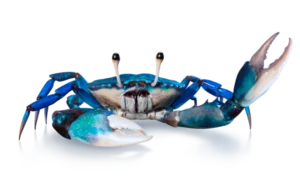Alex Mustard turns his attentions to one of the world’s most-famous shipwrecks – the SS Thistlegorm – and its cargo of military supplies, which offers plenty of subject matter for underwater photographers
Photographs by Alex Mustard
I am just back from two stunning weeks of liveaboard diving in the Egyptian Red Sea, running workshops on the brand-spanking new boat Ghazala Explorer. It is a wonderful time of year to visit the reefs of Sinai, with long sun-filled days, beautiful blue water and super-saturated reef life.
The real bonus of these trips is that we can combine these gorgeous reefs with some of the best photographic wreck diving anywhere. I’d travel a long, long way to enjoy either of these thrills, so to be able to combine them both in one trip is pretty special.
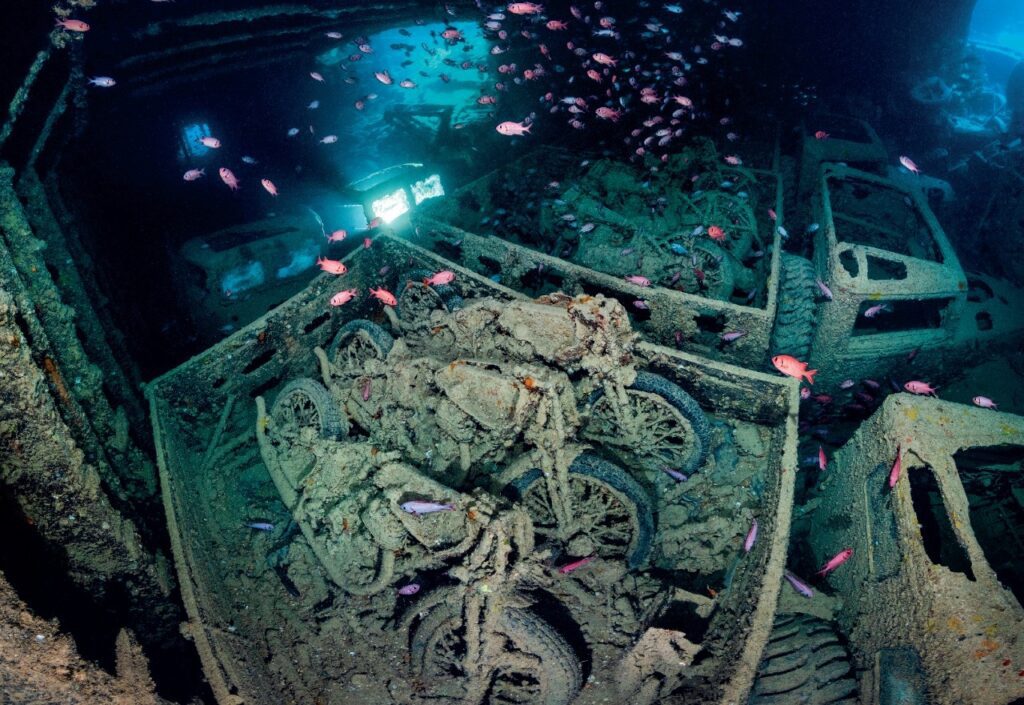
Many people’s highlight of a Red Sea trip is the SS Thistlegorm wreck, with its famous cargo of World War Two military hardware. The Thistlegorm’s vehicles have long been my obsession.
Few people have taken as many photos on this wreck as I have, and as my collection of detailed pictures grew, I realised, about ten years ago, that most of the vehicle identifications in circulation were wrong.
And so began an addiction to photograph them all, correctly identify them and also, where possible, to seek out and photograph surviving examples for comparison.
The effort was combined with a groundbreaking 24,000 image photogrammetry map of the wreck inside and out and published in our 2020 guide book Diving The Thistlegorm.
Producing stunning images of the vehicles of the Thistlegorm is a stern challenge. First, the Thistlegorm can be a very demanding dive, especially when the current runs and poor visibility shrouds the wreck.
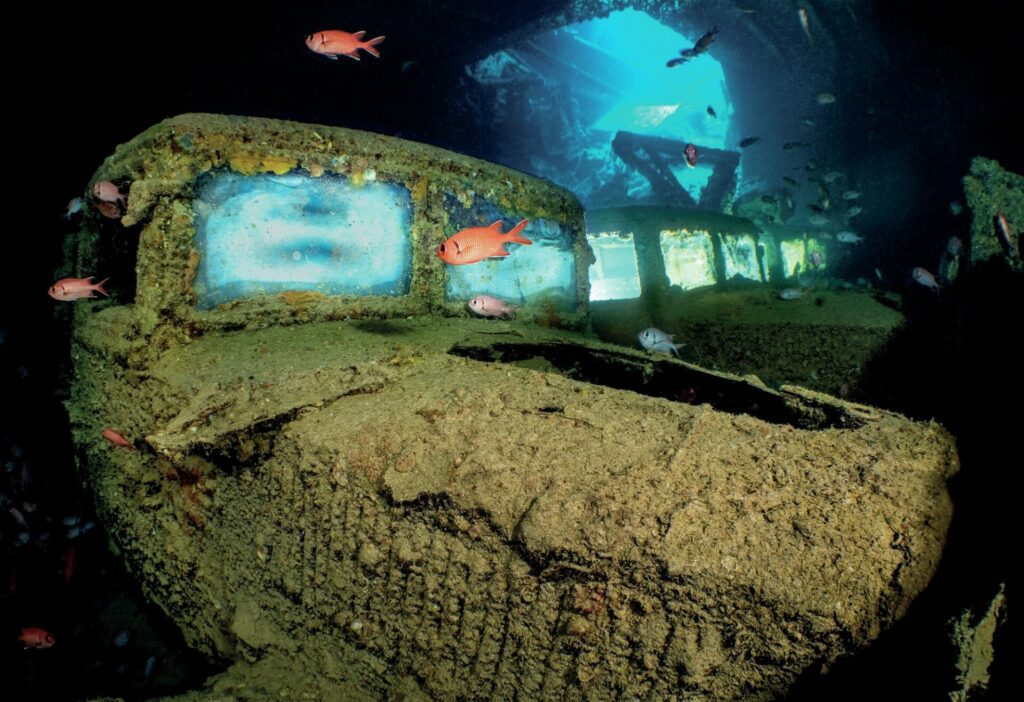
The depth limits time, there is ample to see, but it places a real limit on your ability to stop and craft photographs. The cargo is also mostly packed in the dark recesses of the ship testing your lighting skills.
The holds are large and confusing: it takes time to learn your way around so that you can return to perfect a shot. And often when you do get back, you find a group of divers enjoying investigating that feature, or clouds of sediment still hanging in the water showing careless fins have been there.
On the positive side there is a lot to shoot, there are more than 60 trucks and lorries and over 100 motorbikes in the holds. But this also means that choosing the right one is essential for the best pictures.
The size, condition, type and most importantly position of the vehicle are fundamental considerations. Motorbikes are smaller than trucks and easier to shoot, but with many types of vehicles on the wreck we want to produce a varied portfolio.
Many military vehicles of that period had open cabs, and with wood, cloth, canvas and glass broken or rotted away, they don’t always look recognisable. Shooting a jumble of metal that you need to explain how interesting it is to the viewer will never be a compelling shot.
Most critical is remembering that good photos are always about more than just the subject. You usually enter the holds of the Thistlegorm through the large openings in the middle of the ship, and from here you will see vehicles all around.
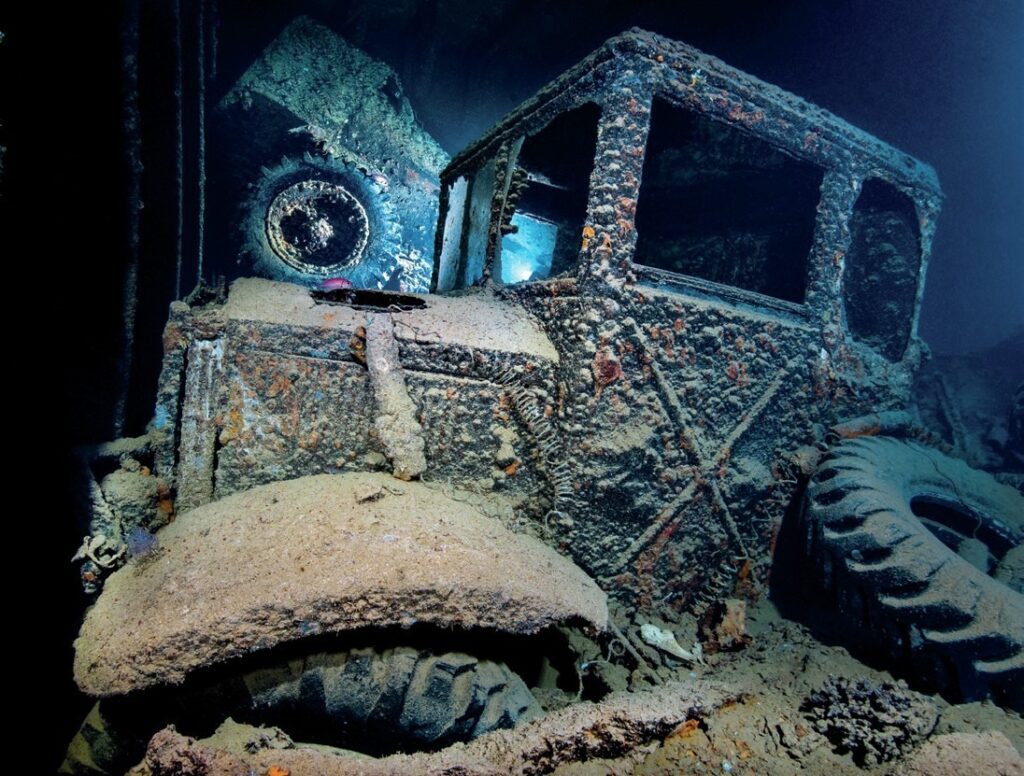
It is a mistake to start shooting them. Instead, you should swim over the vehicles into the darkness of the holds, and when you reach the hull of the ship turn completely around. Now when you start searching for subjects your shots will face towards the light.
The blue background that you get from shooting back to the openings gives an important sense of three dimensionality to the shots. The blue also helps the story, communicating the vehicle is actually underwater, something that is not immediately obvious that a lot of pictures taken on the Thistlegorm.
When you venture deep into the holds the low light levels become a challenge for photography. First, you need to focus the lens and you don’t want to use a torch during the actual shot because it will show up and will cause an orange blur on the subject.
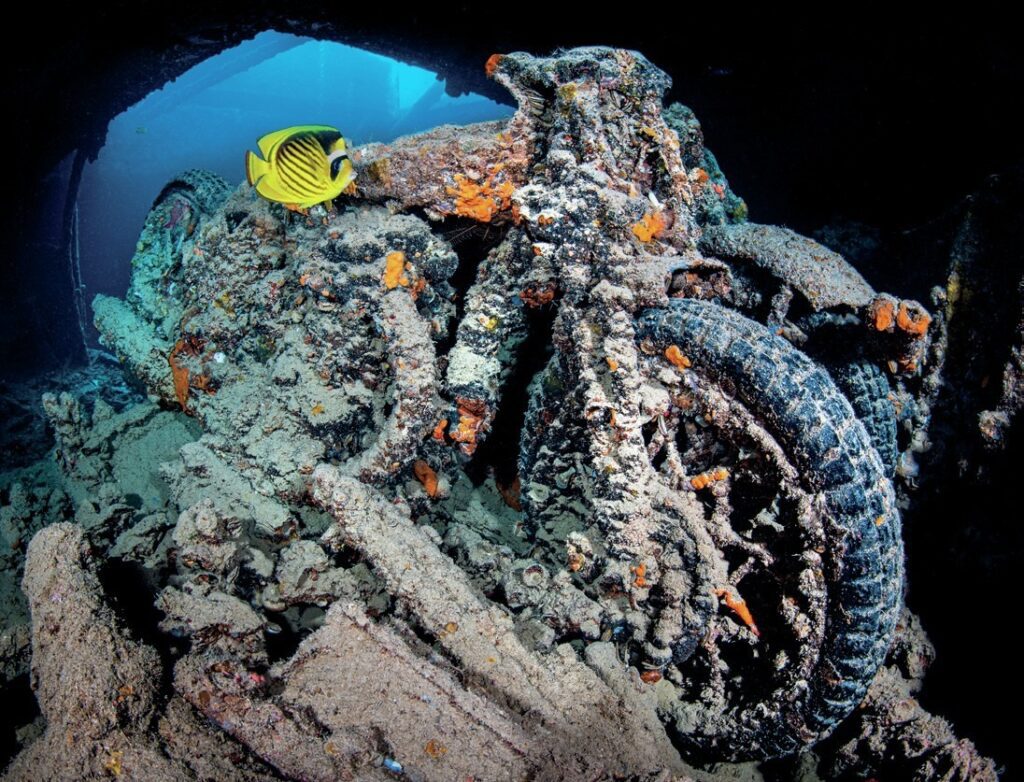
We can keep turning the torch on and off, but I prefer to just set my focus for the whole dive on the outside of the wreck and then leave it fixed. If you are used to using back button focus, this is the ideal technique – focus on deck and then don’t try and re-focus inside unless you have lots of light.
It is important to remember that we cannot set the focus before diving, as a focus in air won’t take into account the effect on the optics of being underwater. Some cameras forget the focus when they go to sleep, so consider turning off this battery-saving feature for Thistlegorm dives.
The darkness also impacts on exposure. I usually bump my ISO up a few clicks for the Thistlegorm coming from the surrounding sunny reefs. But often the light levels are so low in the deeper recesses of the holds that you will need to use a long exposure as well get this blue to come through in the shot.
This is especially true on the early morning or late-afternoon dives that most liveaboards make on the wreck. Most photographers are surprised how slow they need and can push the exposure.
If the foreground subject is in the dark then it will not blur, and will be frozen by the flash. And as long as you can hold the camera reasonably stable, the background blue will record sharply enough.
The longest exposure I have shot on the wreck when using this technique is eight seconds, although most of Thistlegorm shots are taken between ½ and 1/30th second.
Strobe positioning is understandably critical when trying to illuminate the vehicles in the dark. When you shoot wide angle on a reef, if you fail to light part of the scene properly with the strobes, there is still the ambient light to fill in the picture.
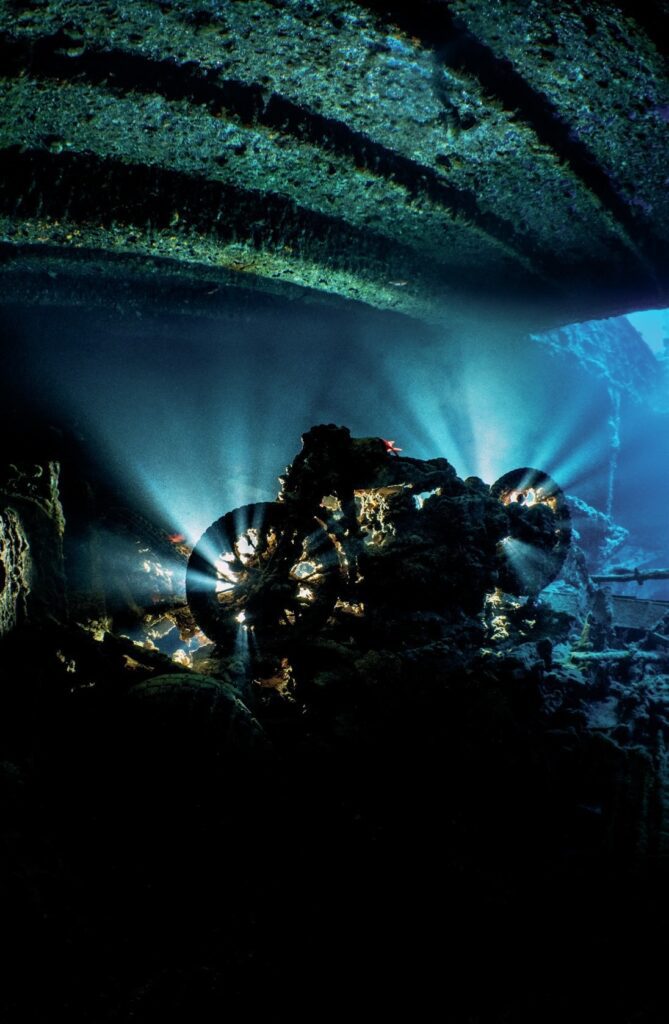
In the darkness of the holds, if you fail to light part of the scene, it will be black in the picture.
I typically use Rabbit Ears strobe positions inside the wreck, with my strobes lifted up above the housing, to create a pool of even light in front of the camera, giving a good exposure from close to the lens to deep into the picture. Off-camera strobes, a topic for another month, can be particularly useful inside the wreck.
The final piece of the puzzle is fish. They are important to include in the compositions because they add colour, life and increase the message that the photos are underwater. There are far more fish in the lower level of the hold, especially schools of red soldierfish.
On the upper level you are more reliant on mobile residents to swim into shot and complete the composition. Fortunately, many species like to follow divers around and you can almost rely on a large wrasse or butterflyfish to come and investigate what you are up to when shooting a vehicle.
Shooting the vehicles is an addictive challenge as there is always another type of collect and it takes many dives to learn all the best angles for each of them. Many you even have to shoot blind, holding the camera down or against a bulkhead to get exactly the best spot for the shot. It’s a great challenge.
This article was originally published in Scuba Diver UK #76.
Subscribe digitally and read more great stories like this from anywhere in the world in a mobile-friendly format. Linked from Mustard’s Masterclass




